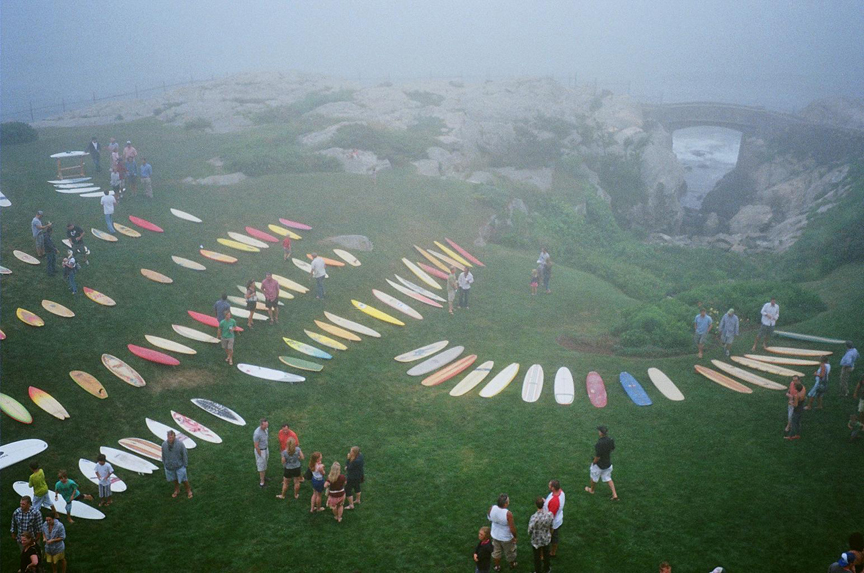Place names help tell the stories of the place.
During the reign of Māʻilikūkahi, who ruled at about the same time Christopher Columbus crossed the Atlantic, invaders from Hawai‘i and Maui arrived on O‘ahu.
In the battles, the O‘ahu forces met the opposing forces in the uplands of Waipi‘o, and a great battle occurred.
Māʻilikūkahi was raised partly in Waialua and is said to have maintained a kulanakauhale (village) there.
Fornander writes, “He (Māʻilikūkahi) caused the island to be thoroughly surveyed, and boundaries between differing divisions and lands be definitely and permanently marked out, thus obviating future disputes between neighboring chiefs and landholders.”
Kamakau tells a similar story, “When the kingdom passed to Māʻilikūkahi, the land divisions were in a state of confusion; the ahupuaʻa, the ku, the ʻili ʻāina, the moʻo ʻāina, the pauku ʻāina, and the kihāpai were not clearly defined.”
“Therefore, Māʻilikūkahi ordered the chiefs, aliʻi, the lesser chiefs, kaukau aliʻi, the warrior chiefs, puʻali aliʻi, and the overseers (luna) to divide all of Oʻahu into moku, ahupuaʻa, ʻili kupono, ʻili ʻāina, and moʻo ʻāina.”
What is commonly referred to as the “ahupuaʻa system” is a result of the firm establishment of palena (boundaries.) This system of land divisions and boundaries enabled a konohiki (land/resource manager) to know the limits and productivity of the resources that they managed – and increase its productivity.
Māʻilikūkahi is also known for a benevolent reign that was followed by generations of peace. He prohibited the chiefs from plundering the makaʻāinana, with punishment of death. His reign “ushered in an era of benign rule lasting for several generations.”
Thrum notes that while Māʻilikūkahi was peacefully disposed, he proved to be a brave defender of his realm in thoroughly defeating the invading forces.
Fornander suggests it was not considered a war between the two islands, but, rather, it was a raid by some restless and turbulent chiefs. The invading force first landed at Waikīkī and proceeded to ʻEwa and marched inland.
At Waikakalaua (an upland ʻili of Waikele) they met Māʻilikūkahi and his forces, and a bloody battle ensued. The fight continued from there to the Kīpapa gulch – stretching across Kīpapa (an ʻili of Waipiʻo,) Waikakalaua and the place known as Punaluʻu.
Tradition has it that the body count from the invaders was so great that it is said the area was paved (kīpapa “placed prone”) with their bodies.
Punaluʻu, an upland ʻili, was named for one of the invading warrior-chiefs killed during the battle. Another warrior-chief, Hilo, was also killed in the battle.
Poʻohilo (an ʻili of Honouliuli) is named from events following a battle in the Kīpapa-Waikakalaua region in which the head of Hilo was placed on a stake at this site and displayed.
Kanupo‘o (an ʻili of Waikele) may be translated as meaning, “planted skull” and seems to imply an event of some importance – it may be tied to events of the battle at Kīpapa and the naming of Po‘ohilo at Honouliuli.
Today, people suggest the gulch is ruled by the spirits of fallen warriors; there are reports that this is one of the paths of the Huakaiʻpo (night marchers) and other reports suggest a woman dressed in white hitchhiking.
The area was also a temporary home to the Naval Air Station Kipapa Field / Kipapa Army Airfield. It was used because it could accommodate two 5,000′ runways free from obstructions (however, concerns were raised about increased air congestion due to its proximity between Pearl Harbor and Wheeler Field.)
The airfield site is located south the Mililani Golf Course between Meheula Parkway and Hokuala Streets – the runways extended out to the edge of the gulch. Mililani District Park is located near the intersection of the 2 main runways.
The use of this site by the Navy would permit the concentration of carrier-group training for Naval aviation on the south side of the island of Oahu including Barber’s Point, Kīpapa Gulch, and Ford Island.
But it was not until sometime after the United States entered World War II that Kipapa Airfield was developed; the exact start date is not clear, but 1943 maps note the facility.
During the war it apparently saw little use by the Navy due to the fact that carrier aircraft were constantly deployed during the war. The Army Air Corps became the principal user of the airfield by default.
Aircraft from this airfield searched & patrolled over the surrounding Pacific area, maintaining a 24-hour vigil to avert any attack with a large number and variety of squadrons are documented to have been stationed at Kipapa Airfield during World War II.
Kipapa Field was evidently closed at some point between 1959 and 1961 (it was no longer depicted on the 1961 and later mapping.)

























































